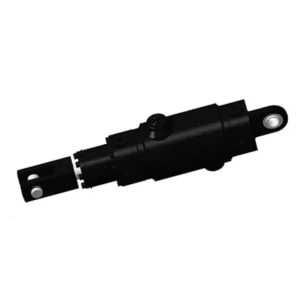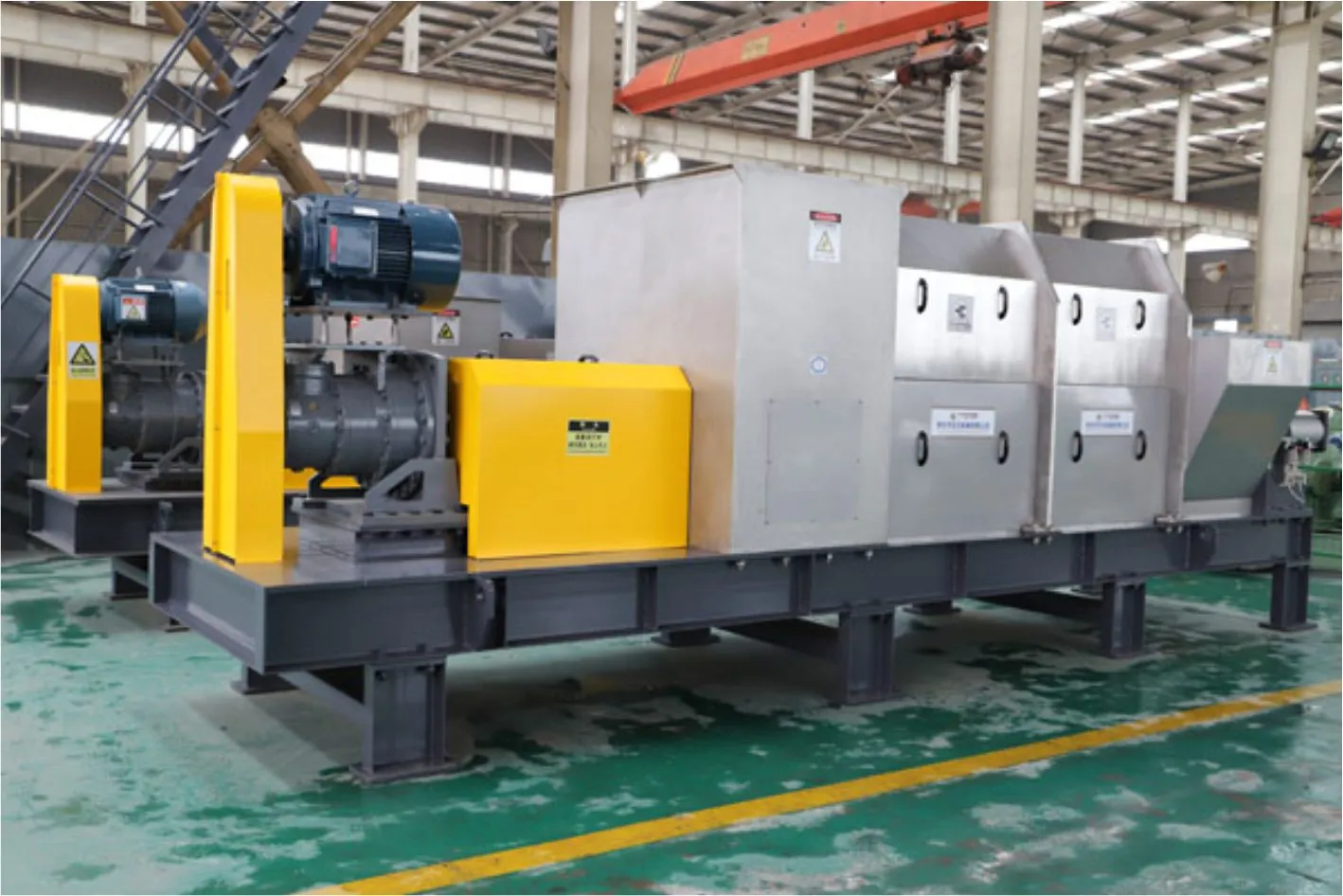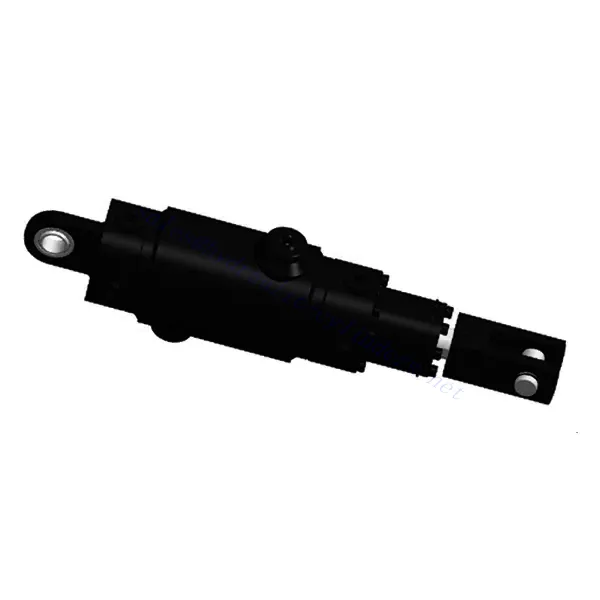Electric Furnace Lock Cylinder
Electric Furnace Lock Cylinder
 The electric furnace lock cylinder is a revolutionary product designed to enhance safety and security in industrial furnace operations. This cylinder serves as a critical component in furnace equipment, providing a reliable locking mechanism for furnace doors and covers.
The electric furnace lock cylinder is a revolutionary product designed to enhance safety and security in industrial furnace operations. This cylinder serves as a critical component in furnace equipment, providing a reliable locking mechanism for furnace doors and covers.
The electric furnace lock cylinder is an indispensable component in industrial furnace operations, providing enhanced safety and security by ensuring reliable and controlled access to furnace interiors. With its robust construction, secure locking mechanism, electric actuation system, and advanced safety features, this cylinder elevates the performance and protection of furnace equipment. By following the recommended usage methods and maintenance practices, you can ensure the optimal operation and longevity of the electric furnace lock cylinder, contributing to a safe, secure, and efficient furnace environment.
Electric Furnace Lock Cylinder Key Characteristics:
- 坚固的结构
- The electric furnace lock cylinder is constructed with high-quality materials, ensuring durability and longevity even in demanding industrial environments.
- Its sturdy build enables it to withstand high temperatures, harsh conditions, and heavy usage without compromising performance.
- Secure Locking Mechanism:
- This cylinder features a secure and reliable locking mechanism, providing a robust barrier against unauthorized access or accidental openings.
- It effectively prevents furnace doors or covers from opening during operation, minimizing safety risks and maintaining operational integrity.
- Electric Actuation:
- The electric furnace lock cylinder operates through an electric actuation system, eliminating the need for manual locking and unlocking.
- This electrically powered system offers convenience, speed, and precise control, streamlining the locking process and reducing human error.
- Safety Features:
- The cylinder is equipped with advanced safety features, such as position sensors, emergency stop mechanisms, and overload protection.
- These safety features enhance operational safety, preventing damage to equipment and minimizing the risk of accidents during lock engagement or disengagement.
Electric Furnace Lock Cylinder Parameter:
| Product Name | Electric Furnace Lock Cylinder |
| Bore diameter: | 40mm |
| Rod diameter: | 28mm |
| Pressure: | 14MPa |
| Thrust force: | Maximum 17KN |
| Electric Furnace Lock Cylinder Applications: | Electric Furnace |
(Bore diameter: 40mm/Rod diameter: 28/pressure14MPa)
Electric Furnace Cylinder Factory:

Usage Method Of Electric Furnace Lock Cylinder:
- Installation:
- Ensure that the electric furnace lock cylinder correctly aligns with the designated mounting area on the furnace door or cover.
- Securely fasten the cylinder using appropriate bolts or mounting brackets, following the manufacturer’s instructions and specifications.
- Electrical Connection:
- Connect the electric furnace lock cylinder to the electrical power source using the provided wiring.
- Verify that all electrical connections are secure and free from loose connections or exposed wires.
- Follow the manufacturer’s proper electrical connection and grounding guidelines to ensure safe and reliable operation.
- Activation and Deactivation:
- Activate the electric furnace lock cylinder by sending an electric signal through a control panel or a push-button switch.
- The cylinder will engage, securely locking the furnace door or cover.
- To unlock deactivate the cylinder using the control panel or switch, allowing for safe access to the furnace interior.
- Integration with Control Systems:
- The electric furnace lock cylinder can be integrated into existing furnace control systems for seamless operation.
- Consult with a qualified technician or the manufacturer’s guidelines to ensure proper integration and compatibility with your specific furnace setup.
How To Disassemble A Hydraulic Cylinder?
Disassembling a hydraulic cylinder requires careful attention and adherence to proper procedures to ensure safety and avoid damage to the cylinder or its components. Here’s a step-by-step guide on how to disassemble a hydraulic cylinder:
- Prepare the Work Area:
- Select a clean, well-lit workspace with enough room to lay out the disassembled parts.
- Lay down a protective covering to prevent contamination and damage to the cylinder or surrounding surfaces.
- Release Hydraulic Pressure:
- Shut off the hydraulic system and release the pressure in the cylinder.
- Follow the manufacturer’s guidelines or consult the equipment manual to depressurize the system safely.
- Ensure the cylinder is fully retracted or extended to minimize potential hazards during disassembly.
- Secure the Cylinder:
- Use appropriate blocks, supports, or clamps to secure the cylinder.
- Prevent any accidental movement or tipping during the disassembly process.
- Remove External Connections:
- Disconnect any hydraulic hoses, fittings, or connections attached to the cylinder.
- Use appropriate tools such as wrenches or pliers to loosen and remove fittings, ensuring no damage to the threads or connections.
- Remove Retaining Hardware:
- Identify and remove any retaining hardware that secures the cylinder to the equipment or mounting.
- This may include bolts, pins, or clips, depending on the specific cylinder design.
- Carefully set aside the removed hardware for later reassembly.
- Separate Cylinder Components:
- Gently tap the cylinder body using a soft-faced mallet or a block of wood to dislodge any tight connections or rust buildup.
- Slowly and evenly slide the cylinder body away from the piston rod, allowing the internal components to be exposed.
- If necessary, use a puller tool designed for hydraulic cylinders to assist in separating stubborn components.
- Inspect and Clean Components:
- Inspect each disassembled component for signs of wear, damage, or contamination.
- Check the piston rod, cylinder barrel, seals, and other internal parts for any signs of leakage, scoring, or excessive wear.
- Clean all components using an appropriate solvent or degreaser to remove dirt, debris, or hydraulic fluid residue.
- Replace or Repair Components:
- Identify any worn or damaged components that require replacement, such as seals, O-rings, or bearings.
- Follow the manufacturer’s recommendations or consult a hydraulic specialist to select and procure suitable replacement parts.
- If necessary, send damaged components for professional repair or reconditioning.
- Reassembly:
- Begin reassembling the hydraulic cylinder by carefully aligning and inserting the piston rod into the body.
- Ensure proper orientation and alignment of all components.
- Refer to the equipment manual or manufacturer’s guidelines for torque specifications and proper assembly procedures.
- Apply a suitable lubricant to the seals and other moving parts as recommended.
- Test and Verify:
- Once the cylinder is reassembled, conduct a thorough inspection to verify the correct reassembly and alignment.
- Test the cylinder’s operation by applying controlled hydraulic pressure and observing for leaks, abnormal noises, or irregular movements.
- Make any necessary adjustments or repairs before reinstalling the cylinder into the equipment.
工厂的能力和产能:
(1) 装配
我们拥有一流的自主研发装配平台。液压油缸生产车间拥有 4 条半自动提升油缸装配线和 1 条全自动倾斜油缸装配线,设计年生产能力 100 万支。特种油缸车间配备了各种规格的半自动清洗装配系统,设计年生产能力 20 万只,并配备了知名数控加工设备、加工中心、高精度油缸加工专用设备、机器人焊接机、自动清洗机、油缸自动装配机、自动喷漆生产线等。现有关键设备 300 多台(套)。设备资源的优化配置和高效利用,保证了产品的精度要求,满足了产品的高质量需求。


(2) 机加工
加工车间配备了定制的斜轨车削中心、加工中心、高速珩磨机、焊接机器人及其他相关设备,可加工最大内径 400 毫米、最大长度 6 米的气缸管。

(3) 焊接

(4) 油漆和涂料
配备中小型圆筒自动水性漆喷涂线,实现机器人自动上下料和自动喷涂,设计产能为每班 4000 件;
我们还拥有一条由动力链驱动的大型油缸半自动喷漆生产线,设计产能为每班 60 箱。


(5) 测试
我们拥有一流的检验设施和试验台,确保气缸的性能符合要求。

We are one of the best hydraulic cylinder manufacturers. We can offer comprehensive hydraulic cylinders. We also provide corresponding 农用齿轮箱. We have exported our products to clients worldwide and earned a good reputation because of our superior product quality and after-sales service. We welcome customers at home and abroad to contact us to negotiate business, exchange information, and 与我们合作!
参观我们的 VR 工厂
通过以下方式参观我们的 VR 工厂
叉车液压缸如何工作?
液压缸应用:


